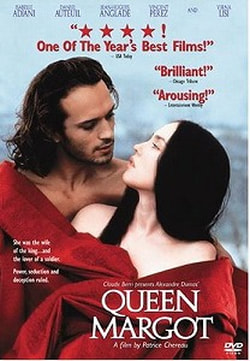 Low-res DVD cover; fair use claimed. Low-res DVD cover; fair use claimed. Four hundred forty-six years ago yesterday, the St. Bartholomew's Day Massacre began in France. Today the killings continued in the city of Paris, before the King ordered them to stop (then start again, then stop, no really, stop). They didn't stop; they continued throughout the country into the autumn, but royal permission had been withdrawn so the crown could avoid blame for the later murders. Yesterday I looked at the history and the 1994 film about the massacre, La Reine Margot. Today, I'm going to look at the costumes and especially the lace in that movie. The pictures in this post are all screencaps from when I last watched it, cropped to focus the attention on specific characters/costumes. Click any one to see it full size! THE DESIGNER AND DESIGN Moidele Bickel was the costume designer for this film. Since La Reine Margot is based on a novel and not reality, it's no surprise that the costumes are more fantasy than otherwise. Bickel claimed to take inspiration but not exact patterns from various artists of that century, but she was not interested in perfect recreation as much as impressionism and character. That philosophy shows! The clothes are not historically accurate, but they're unique and worthy of notice, and they certainly help to create the characters. Since the costuming budget was small, the seemingly expensive brocaded silks are actually printed cotton sateens, the trim is minimal, and the lace is mostly machine made. In order that the actors could look more casual, there wasn't as much starch in the ruffs as there could have been, leading to a floppy look in some scenes. On the other hand, starched ruffs were prone to getting floppy in humid weather or on sweaty wearers, which was much complained about in actual history, so I don't mind them in this film! ("Bandboxes" were invented to carry starched neckbands to parties or events, to keep them safe from the weather.) As for awards, in 1995, Moidele Bickel was nominated for an Oscar for costuming this movie. That same year, she also won a César Award for Best Costume Design for this movie. ALL IN FINERY! Let's start with the wedding scene, where the gorgeous clothing does an excellent job of making the characters look rich and distrustful of each other, while showing the two camps (Catholics and Protestants).
Actually, now that I think of it, there aren't many interesting Protestant outfits from the wedding, though there is a scene at the end of the wedding where a colorful mostly-Catholic procession leaves the church in their gay attire, but all the congregants are in black clothes with white linens... perhaps they were the Protestant witnesses, in town for the wedding? After the wedding, there's a big party where clothing seems to be optional. The Catholic women are mostly engaged in rating the charms of the Protestant men, and the menfolk want to punch each other. The costumes are the same as at the wedding, only without ruffs, chemises, or modesty of any sort. It's all rather tedious, so I fast-forwarded it and didn't get any screencaps. But if it's your first time watching the movie, do watch this scene since it sets up later intrigues. RUFFSLa Reine Margot (1994) does a lot with ruffs: makes them out of metal or burlap or stretched sheers, makes them in black or red or brown, sews them to the doublets so they hang open when the doublet opens instead of being shirt collars...
Based on what I know, ruffs were always white linen, though they could be starched with colored starches to make them pastel colors. They were not sewn to the outerwear, but were either sewn to the shift or tied to the neck under the outerwear. The movie variations are probably not historical, but never say never! MURDER MOST UNFASHIONABLE The massacre has no costumes worth mentioning. The Huguenots, being roused from their beds, are mostly running around in shifts or naked and bloodied. Their killers start out dressed and armed, but some are shown with bare chests and loose hair to suggest their lack of restraint. However, there is the scene where La Môle, fleeing from murderers, gets into Margot's bedroom and pleads for help. He's almost unconscious from panic and blood loss, and doesn't really know who she is or where he is. Here's how Alexandre Dumas describes the scene: Coconnas advanced, and with the point of his long rapier again wounded his enemy's shoulder, and the crimson drops of warm blood stained the white and perfumed sheets of Marguerite's couch. The interesting thing in the film is the sheerness of his shirt. I know from some old handkerchiefs I own that cotton can be quite sheer, and I think that many of the sheer partlets of portraiture were linen, but I wonder if anyone would have made a whole shirt of such fabric back in the day. Why would they? Despite the free-and-easy conventions of this film, in the actual 1500's, shirts were underwear, and served the practical purposes of wicking, warmth, and protection of the outer garments from soil. Would a petty noble, which is what La Môle is, have flimsy finery for his most practical and frequently washed garment? Still, in the context of this film, it shows La Môle for the hunky fantasy man he's meant to be. Anyway, she saves him. Then we get a glimpse of the lusty Duchess Henriette, who's been running around the Louvre with armed guards, playing atrocity-tourist: This picture shows an oddity of the film's costuming choices: the only time the women seem to be wearing shifts is the night of the massacre! In all the other scenes they run around bare under their gowns. Why this one scene do they suddenly get shifts? I suspect it's so the blood would show to cinematic effect. LACEI've already covered a bit of the wire lace and embroidered nets pretending to be lace above. Here, I want to look at actual lace in the film. There's precious little of it, considering how much these people would have been wearing in reality!
(As an aside: when I watch French movies, I get a weird feeling of familiarity. I think it's because my ancestry is French, and my features and my family's features look like this. Look at these people's eyes, the shape of them, how inset they are, the proportion of lids showing... is it just me, or do they look like mine? A friend of mine told me I didn't look French and that the French don't have a look, but I think he's wrong. But it's just a feeling, nothing I can define. In contrast, Isabelle Adjani, the actress playing Margot, doesn't look very French at all, and she actually is!)
Meanwhile, Margot has a lovely outfit with gold lace veil, partlet, and ruff. This is when her mother puts her under house arrest, so it makes a "gilded cage" around her face. Since I'm obsessively looking at laces, I catch a continuity error in the boar-killing scene! On the left, we see Henry, torn between saving the king's life or taking the opportunity to escape. I don't know what kind of lace he's wearing, but it looks much more authentic than other laces in the film. It is (or successfully imitates) a needlelace. Then, after he's saved the king's life, he realizes he's lost his chance to run away. But now he's wearing a bobbin lace! Check it out... those are two different collars. Speaking of punto in aria, here's are two examples of that most basic needlelace: a stitch covered in buttonhole stitches, then more of the same built on that like shingles. On the left, a small trim of this type applied to the edge of a ruff. On the right, a good example of a more complex needlelace trim, inexplicably applied to the underside of a beige collar. CONCLUSION? The movie's worth a watch if you have a strong stomach for gore and high tolerance for meaningless sensuality; despite its foibles, it's well paced, well-acted, and interesting. If you feel like fast-forwarding any of it, I'd say fast forward the lovers' idyll near the end (Margot and La Môle in a shack of some sort). Do not fast forward the massacre, because it's so well scored. Do not fast-forward the court intrigues, because they end up being surprisingly poignant.
2 Comments
The Sister
9/7/2018 04:53:25 pm
Hmmm.... worth a watch, I think, next to my sister, with some tea! Let's do it on your next visit.
Reply
Blake
4/9/2024 04:14:47 am
Isabelle Adjani actually isn't French by ancestry -- her mother is German (Bavarian) and her father is Algerian. Thanks for this great write up on the costumes.
Reply
Leave a Reply. |
Karen Roy
Quilting, dressmaking, and history plied with the needle... Sites I EnjoyThe Quilt Index Categories
All
Archives
March 2024
|
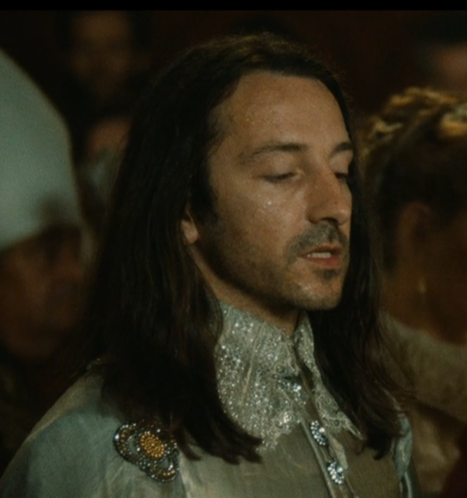
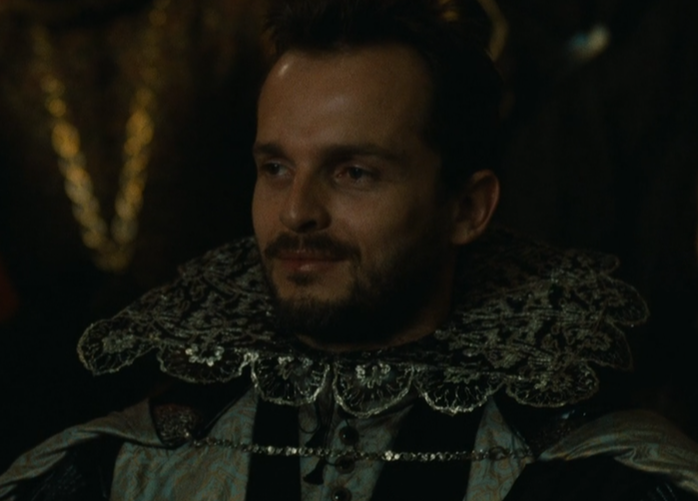
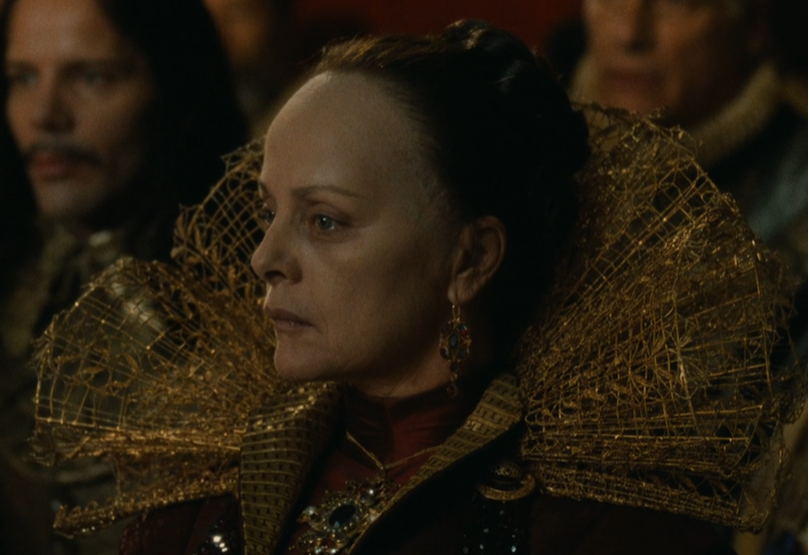
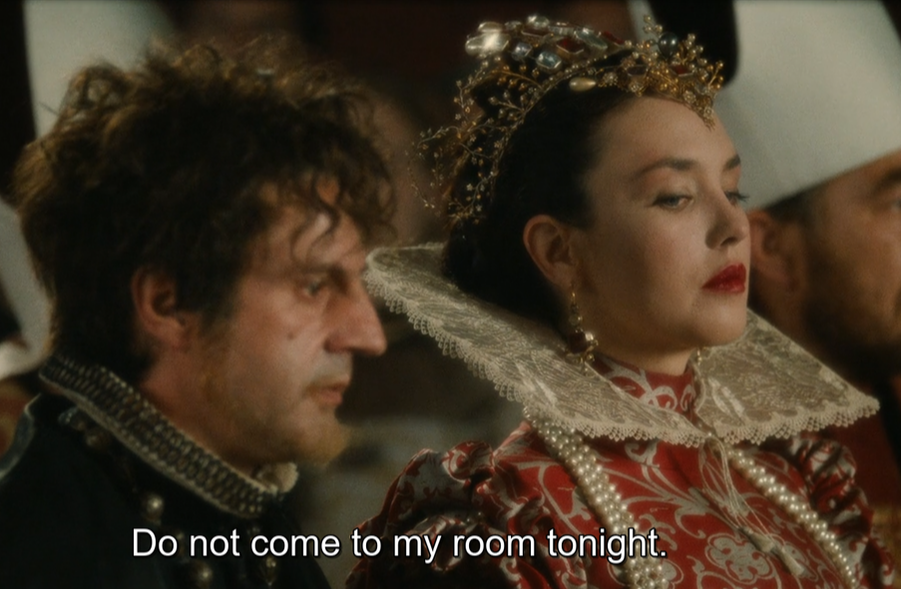
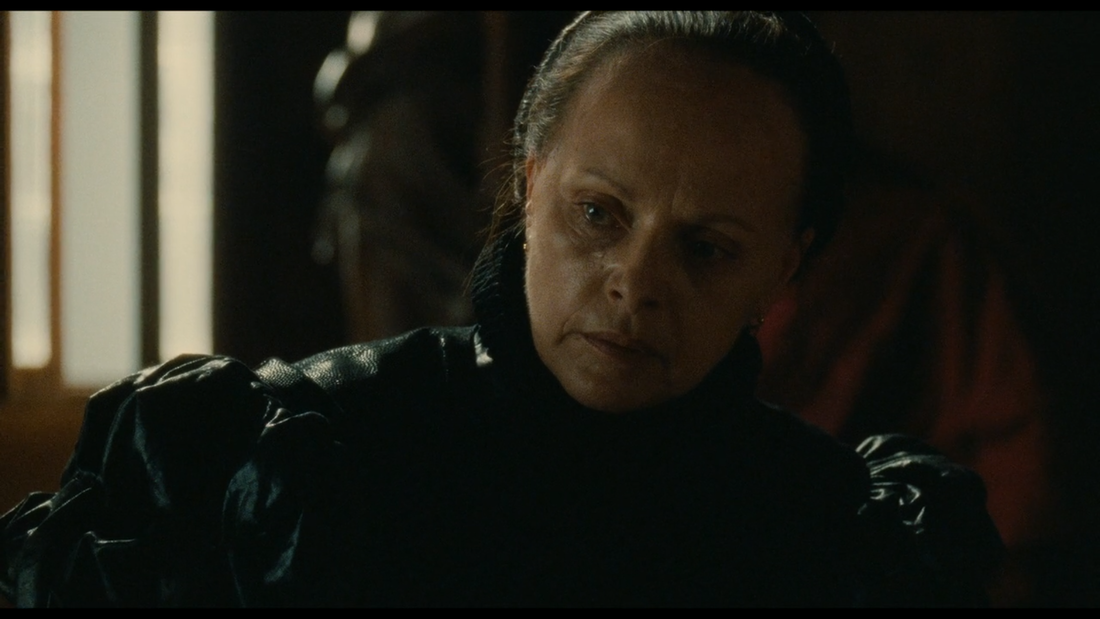
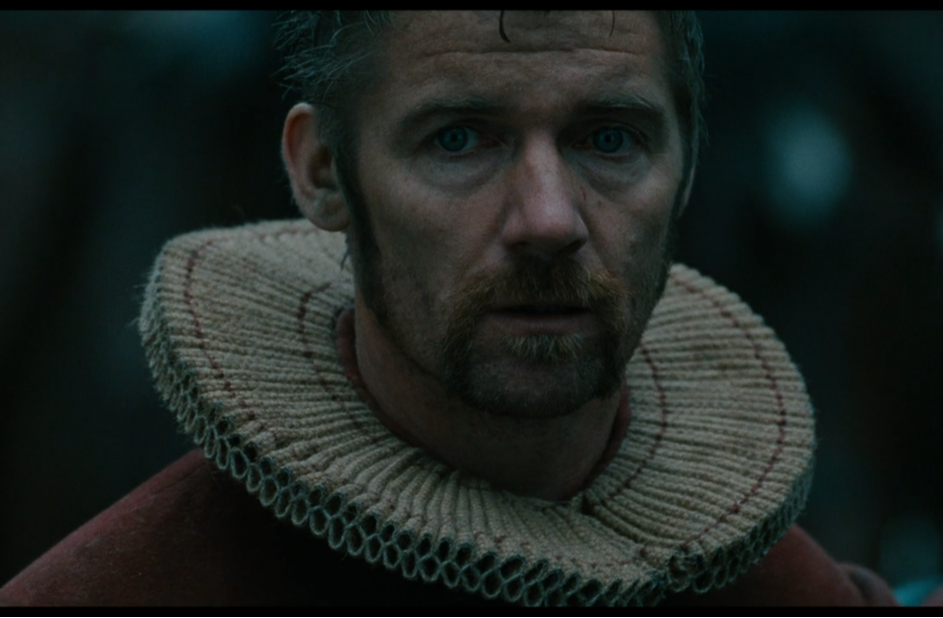
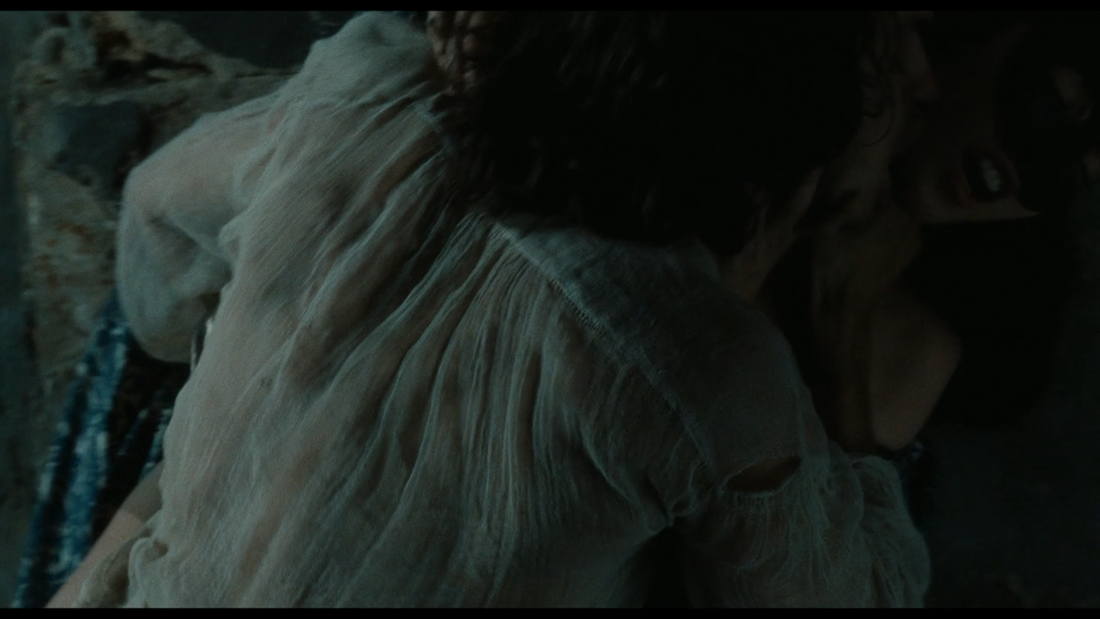
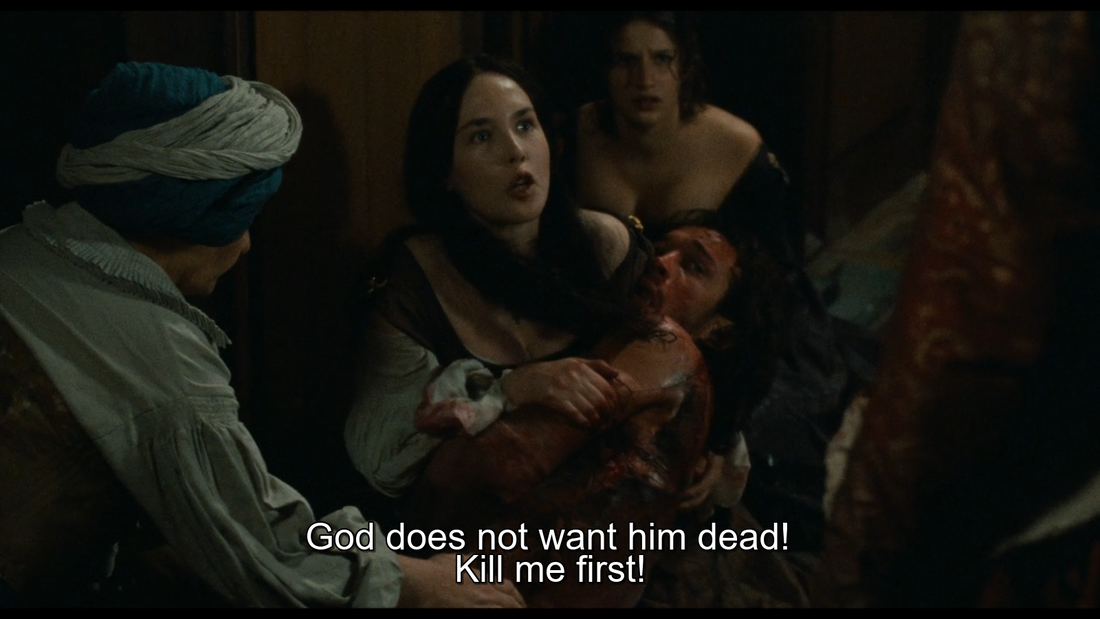

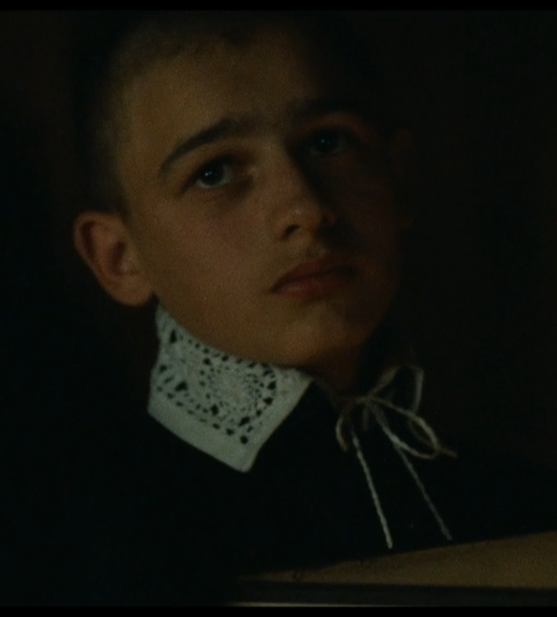
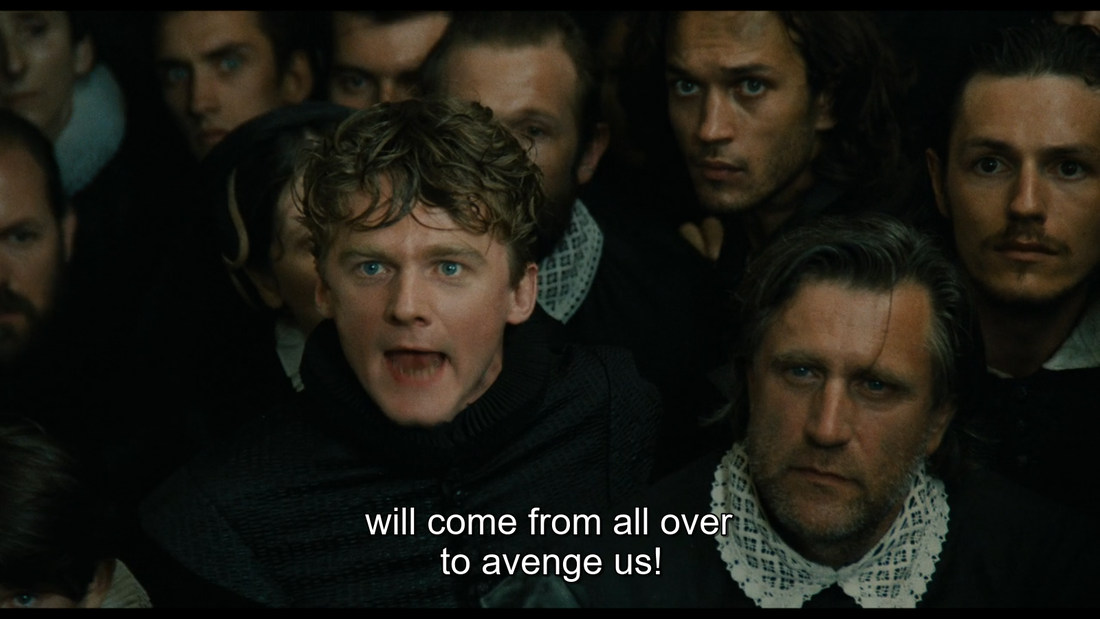
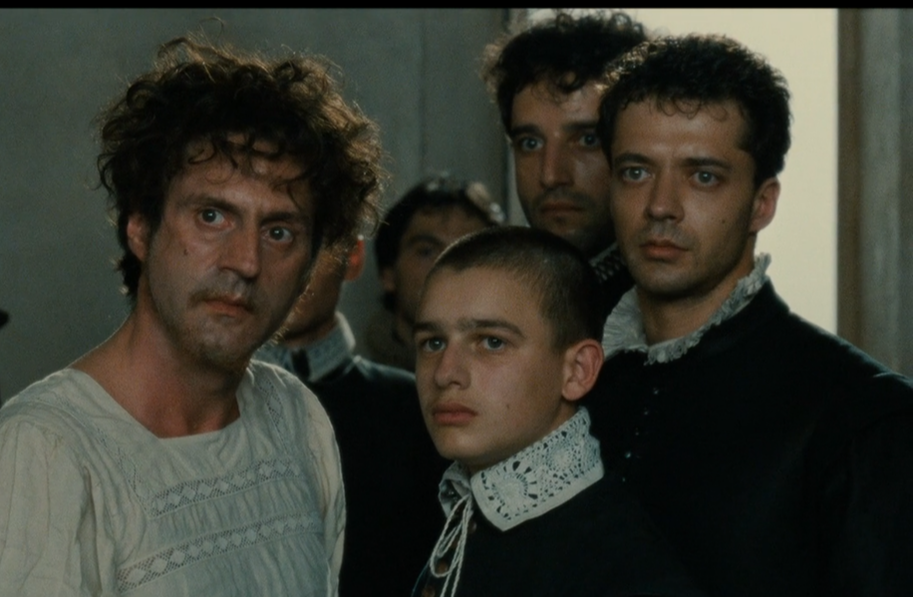
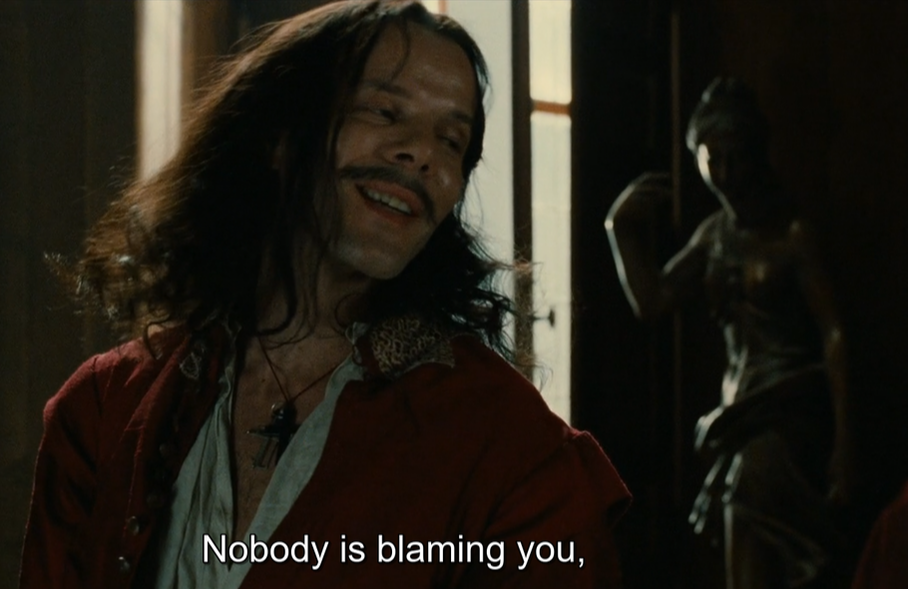
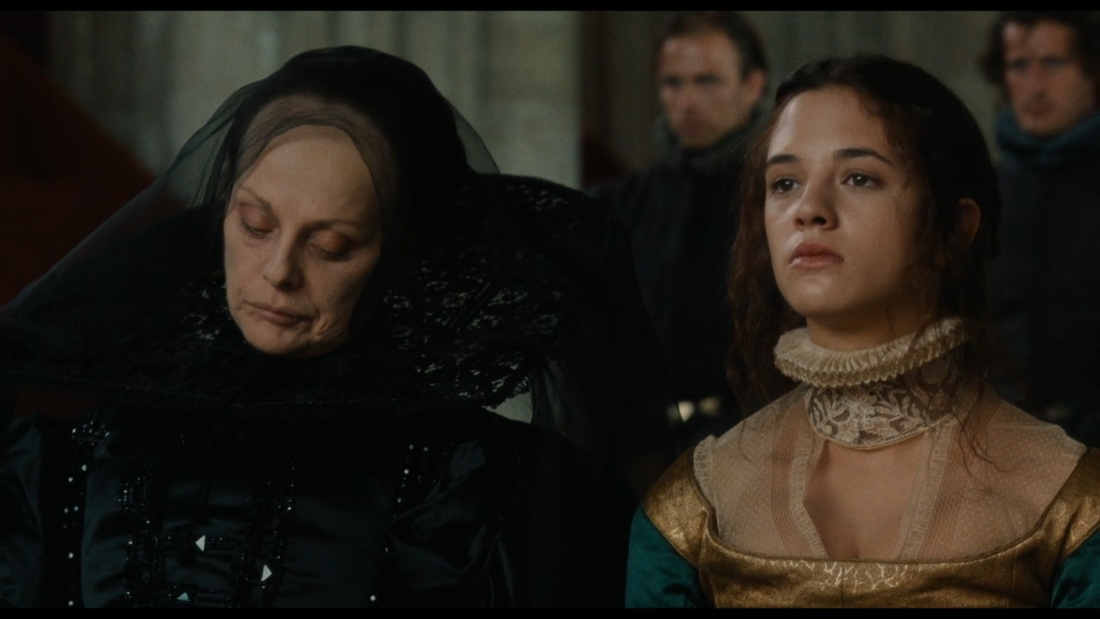
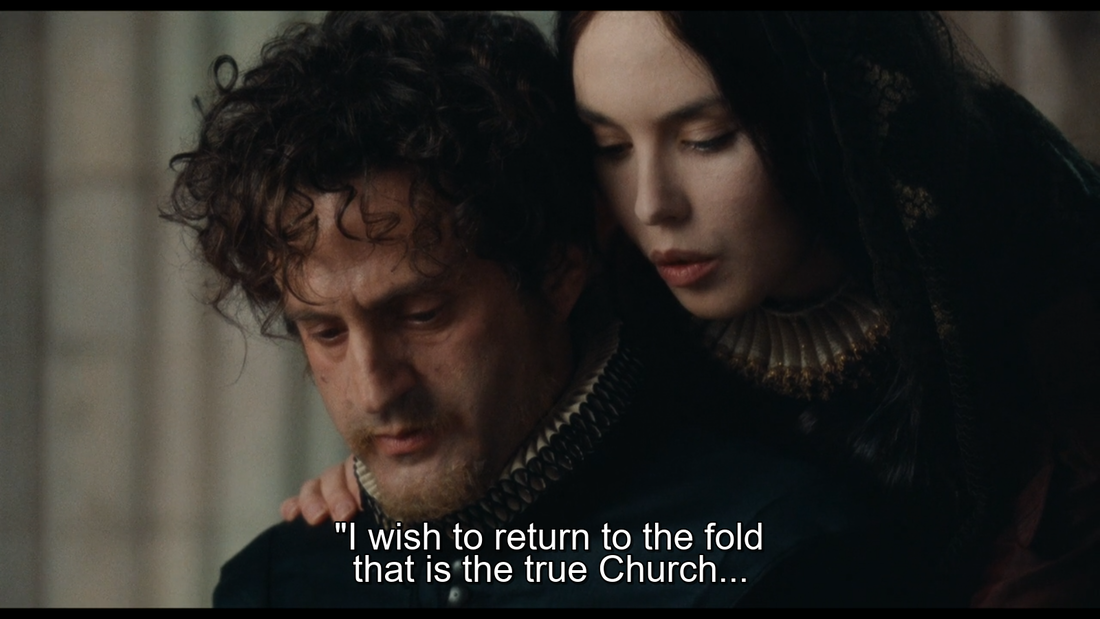
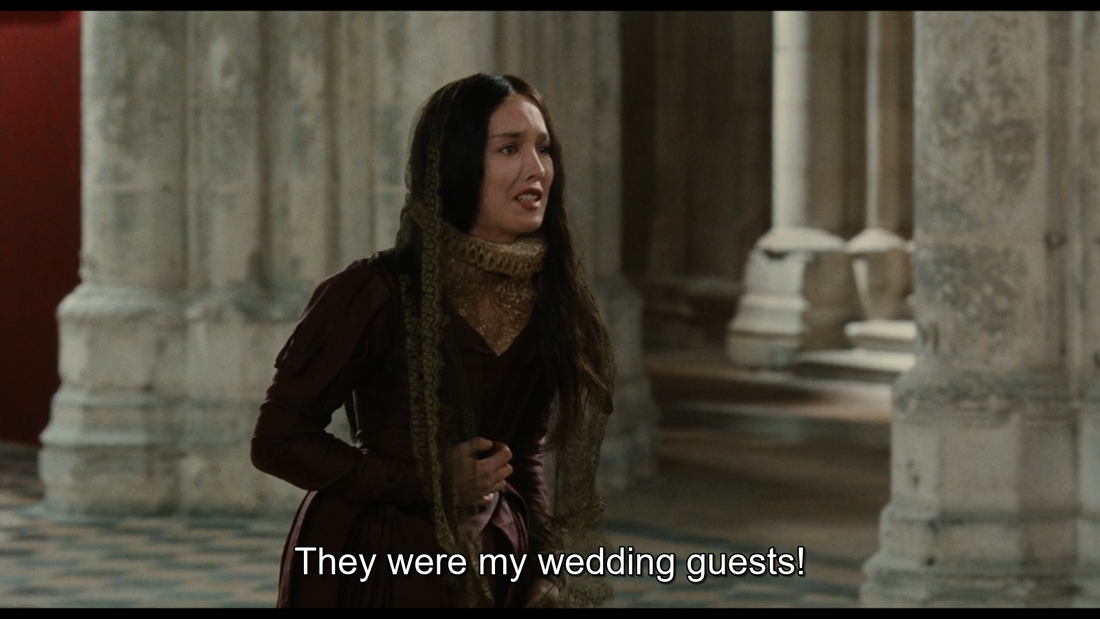
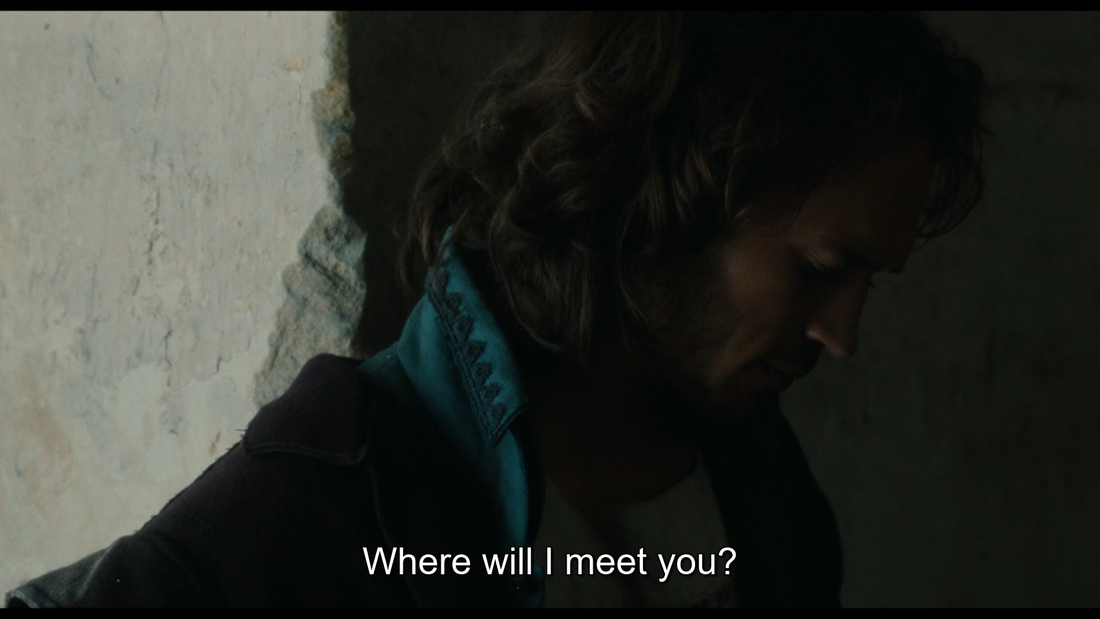
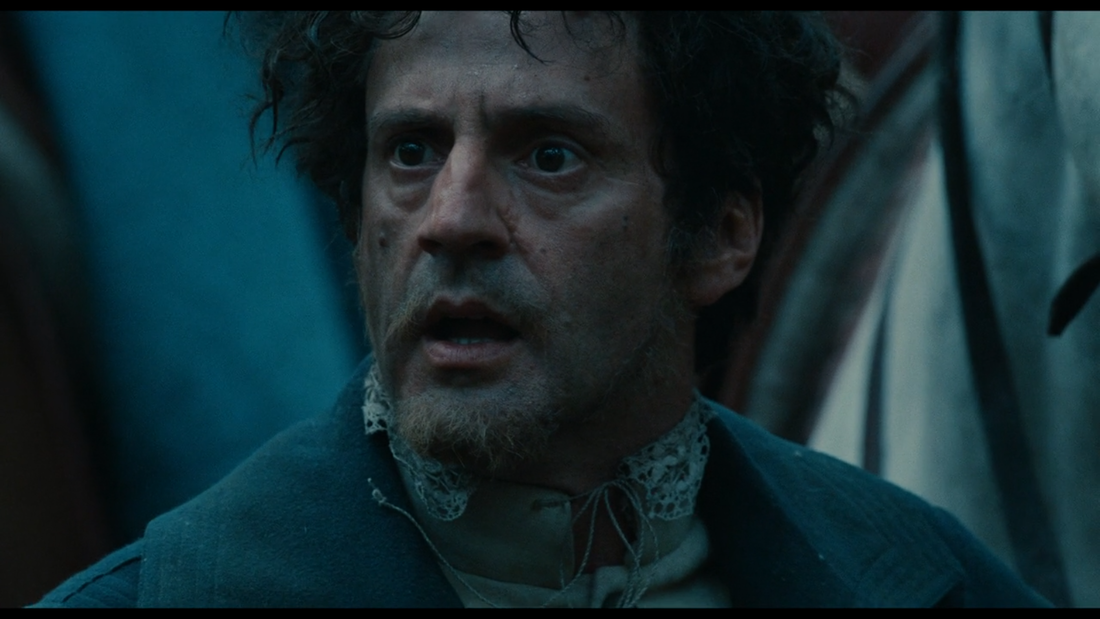
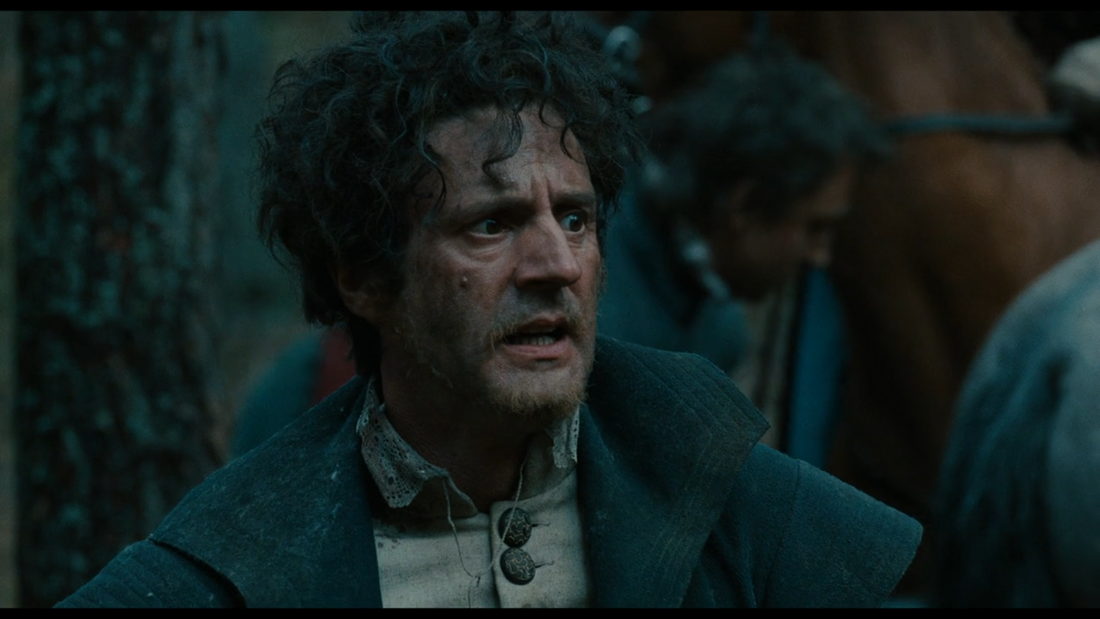
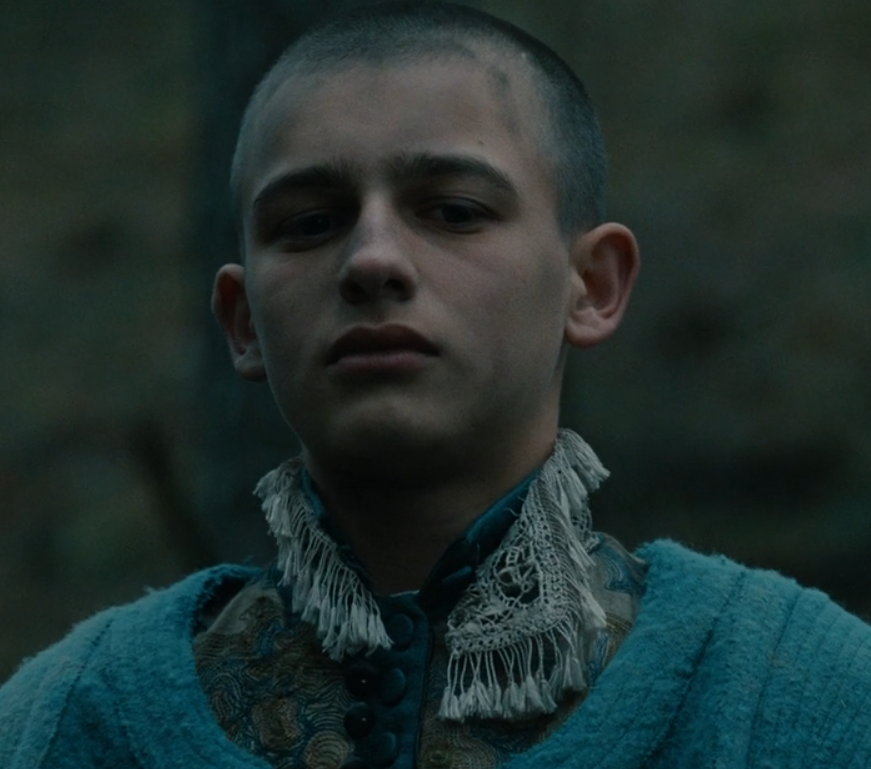
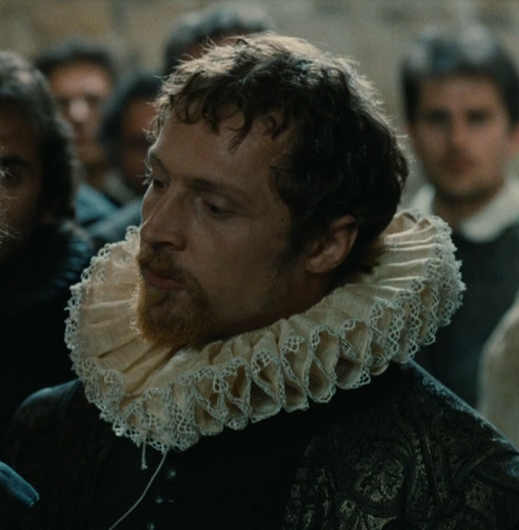
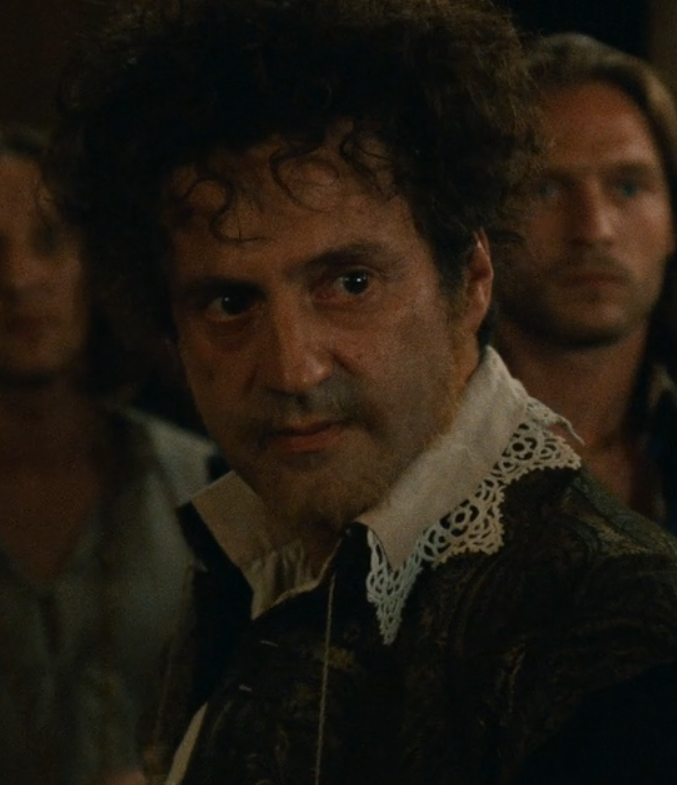
 RSS Feed
RSS Feed